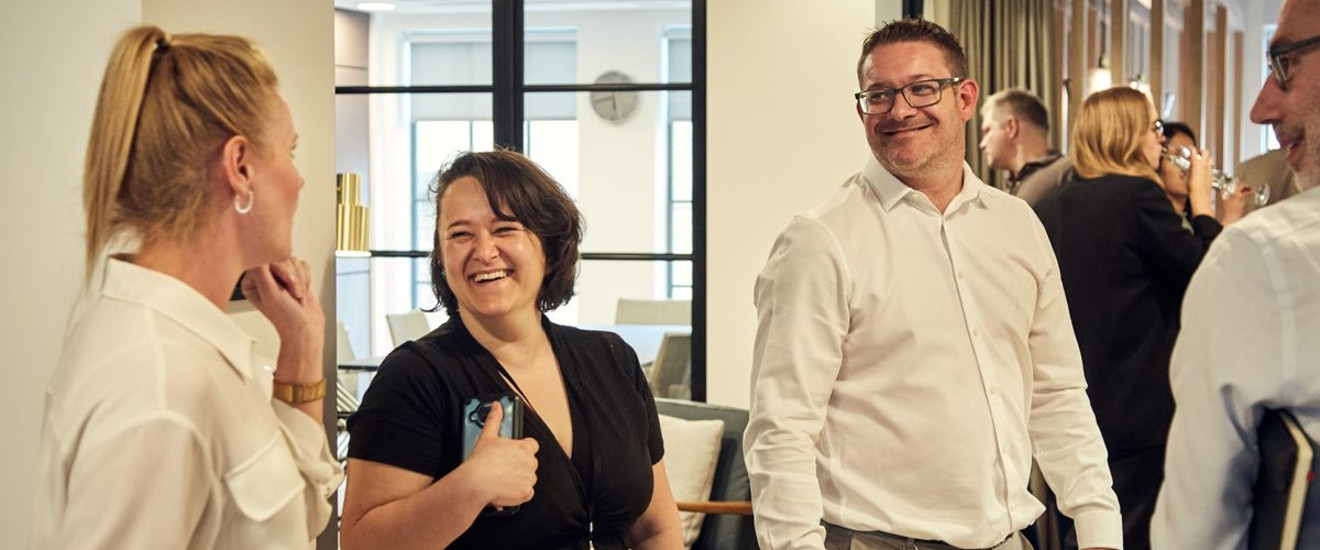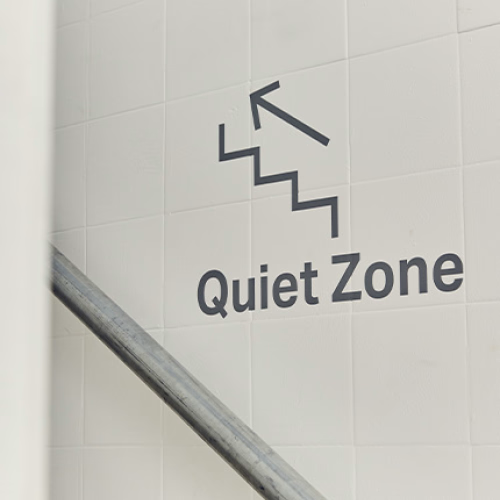Putting purpose behind our passions
Watch this video to see how we bring purpose to Peldon Rose through sharing our passions.


When you step into your workplace, how does it make you feel? As humans, it’s natural to develop strong connections to our surroundings. When it comes to work this is known as workplace attachment - the emotional bond between a person and their place of work. It shapes our behaviour in the space.
Maslow’s hierarchy of needs explains the different factors that affect the strength of our workplace attachment. This pyramid of human needs can be categorised into basic, psychological and self-fulfilment. We strive to move through the ranks before reaching the top tier of self-fulfilment, or reaching one’s full potential where creativity flourishes.
The workplace should be designed to support our needs at every level and I sat down with the team at Peldon Rose to discuss workplace attachment and our favourite places in Sterling House. Then, we can understand how our workplace enables our people to realise their full potential.
The first basic human needs are physiological. These are the fundamental elements that humans depend on to survive, including food, drink, shelter and warmth. Marketing Executive, Georgia, finds comfort in Sterling House’s supplies: “Having bowls of fruit, tea and coffee available throughout the day is more than just a simple work perk. For me, it’s reassuring to know that there are healthy snacks to refuel if I exercise before work. Then, if I opt for a post-work run with some of the other Peldon Rose Runners, I can grab a coffee for an energy boost.”
Once physiological needs have been satisfied, we depend on security, safety, finding comfort in predictability and control. Marketing Assistant, Harriet, appreciates the familiarity of working within a similar setting: “I’m definitely a creature of habit and I gravitate towards the corner desks on the third floor.” Similarly, Pre-Contract Manager, Jason, enjoys working on the third floor, next to the window: “I love the view and the natural light. I’ve also found a spot directly below an air vent which has kept me cool during the recent heatwave!”
By nature, human beings are social creatures, and throughout time we have depended on others for survival. While some work is best carried out autonomously, the third tier in Maslow’s hierarchy of needs refers to the emotional need for interpersonal relationships. In Sterling House, the ground floor is the perfect space to interact. Workplace Consultant, Melanie, said: “A kitchen booth on the ground floor is a lovely spot to sit in first thing in the morning. It has a coffee shop vibe, and it means you can greet everyone as they come in, a great start to the day.”
Another source of camaraderie, Head of Landlord, Kevin likes to spend time on the third floor: “I love the third floor for the light, the ambience (despite the dodgy music choices) and for the banter between teams up there.” Here, workplace attachment builds thanks to the growth of social capital between teammates.
The latter stages of Maslow’s hierarchy of needs move away from the need to reduce a deficit of sorts, and instead moves toward growth needs. Maslow’s fourth tier emphasises the need to achieve self-worth and accomplishment. Here, workplace attachment develops when the workforce operates in an environment that enables them to successfully carry out the job. Mary, Executive Assistant, appreciates Sterling House’s library when the responsibilities of her role require focused work: “Sometimes I want a quiet, private space to take care of my mental wellbeing, or in the mornings before I’ve had my first coffee! I also love the library when I need to crack on. It means I can focus and make real progress with my to-do list.”
The top level in Maslow’s hierarchy of needs, and the point at which workplace attachment blossoms, is at the point of self-fulfilment. In the workplace, this can be expressed creatively, or by mastering a certain skill. We’re workplace thinkers and makers, and the talents of our design team are nurtured on the second floor. “Working on the second floor means I get to sit next to new people every day and learn from the other designers” says Project Designer, Caitlin. “Sit-stand desks mean I can work efficiently and having the design library in such close proximity is a constant source of inspiration, especially when we host suppliers and learn about new products and developments in the design world.”
For those who have been separated from their place of work for any length of time, this workplace attachment will weaken. You disconnect from the buzz when bouncing ideas between colleagues while making a coffee, or forget how it feels to celebrate success surrounded by your best-loved team-mates.
The workplace is a physical representation and personification of any business, and the breakdown of workplace attachment may also coincide with the breakdown of shared purpose between employees. Undoubtedly, working from home brings with it many benefits, but if business leaders are faced with a significant number of employees who are happy to work from home forevermore, it’s worth considering the reasons why the absence of any type of workplace attachment exists, and how this can be overcome.

Watch this video to see how we bring purpose to Peldon Rose through sharing our passions.

Here are 5 office design essentials for a commercial office space. Get inspiration from our experts for a...

With wellbeing at the top of the agenda for today's workforce, here's how businesses can truly make an...

Senior Technical Designer Sean Dowdeswell tells us about how he got into sailing and how he's shared his...

Your workplace holds enormous potential to improve your business performance. Get in touch today, and we will unlock that potential together.